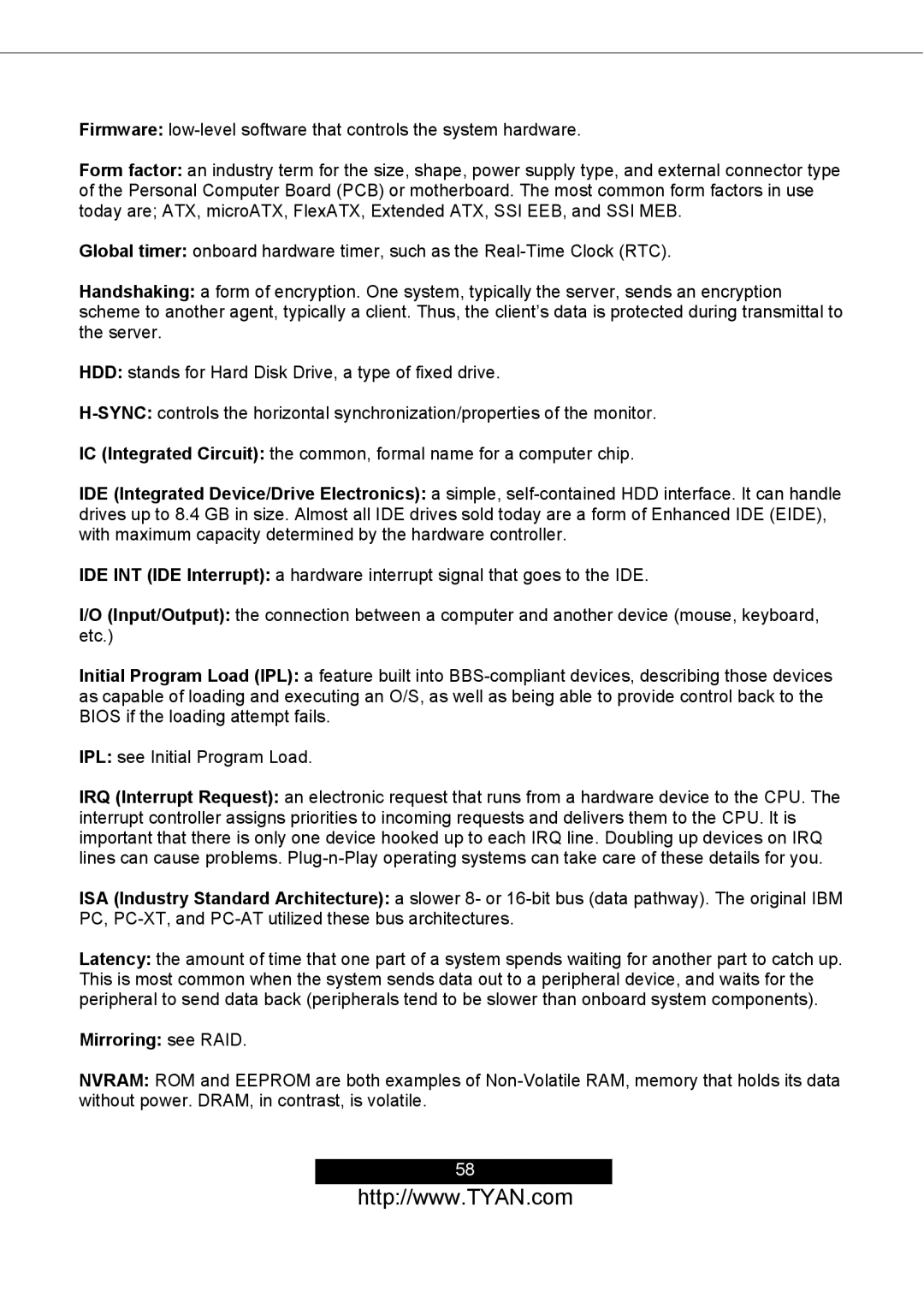
Firmware:
Form factor: an industry term for the size, shape, power supply type, and external connector type of the Personal Computer Board (PCB) or motherboard. The most common form factors in use today are; ATX, microATX, FlexATX, Extended ATX, SSI EEB, and SSI MEB.
Global timer: onboard hardware timer, such as the
Handshaking: a form of encryption. One system, typically the server, sends an encryption scheme to another agent, typically a client. Thus, the client’s data is protected during transmittal to the server.
HDD: stands for Hard Disk Drive, a type of fixed drive.
IC (Integrated Circuit): the common, formal name for a computer chip.
IDE (Integrated Device/Drive Electronics): a simple,
IDE INT (IDE Interrupt): a hardware interrupt signal that goes to the IDE.
I/O (Input/Output): the connection between a computer and another device (mouse, keyboard, etc.)
Initial Program Load (IPL): a feature built into
IPL: see Initial Program Load.
IRQ (Interrupt Request): an electronic request that runs from a hardware device to the CPU. The interrupt controller assigns priorities to incoming requests and delivers them to the CPU. It is important that there is only one device hooked up to each IRQ line. Doubling up devices on IRQ lines can cause problems.
ISA (Industry Standard Architecture): a slower 8- or
Latency: the amount of time that one part of a system spends waiting for another part to catch up. This is most common when the system sends data out to a peripheral device, and waits for the peripheral to send data back (peripherals tend to be slower than onboard system components).
Mirroring: see RAID.
NVRAM: ROM and EEPROM are both examples of
58
http://www.TYAN.com
